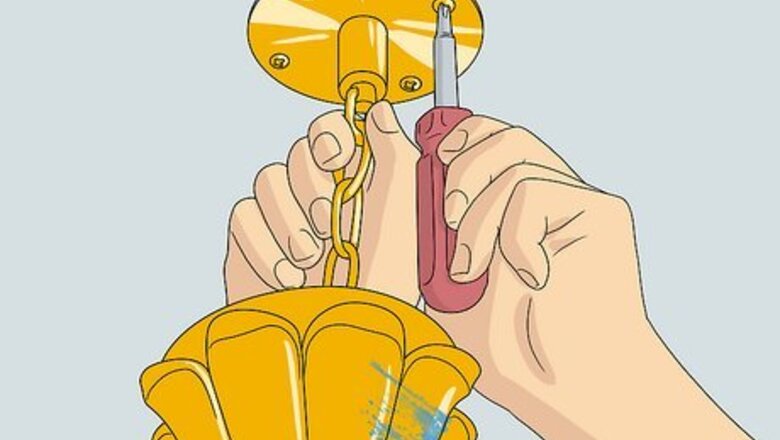
views
Soaking the Fixtures

Collect your dirty and painted brass objects. You’ll first want to gather all of the brass you’d like to clean. If you’re cleaning fixtures, use a screwdriver to remove the fixtures from the walls or doors. Carefully set aside the screws for each fixture. You can use individual plastic bags to keep track of which screws go with which fixtures. Label the bags with permanent marker.
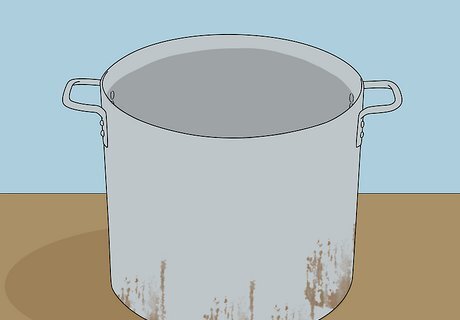
Find a large pot that you don’t plan to cook in again. Because many brass fixtures are quite old, they may be covered in lead-based paint. You’ll need a pot you do not plan on cooking in ever again to remove this paint. You can save the pot, however, for your future cleaning needs. If you don’t have an old pot, you can likely buy one at a thrift store for under $5. Alternatively, you can use an old crockpot, but only if you can commit to not cooking in it again. You can also use an old crockpot, but only if you can commit to not cooking in it again.
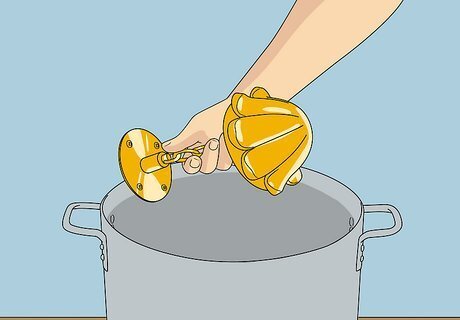
Place the brass items in the pot. Try not to overfill the pot, and split your cleaning into two sessions if necessary. All of the brass should have enough space in the pot not to touch any other items.
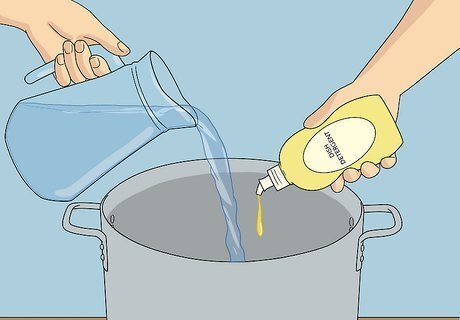
Add water and dish detergent to the pot. Fill the pot with enough water that all of your brass is completely submerged. Add about 4–5 tablespoons (59–74 mL) of soap and give the pot a good mix with an implement you don’t mind throwing away.

Simmer the mixture for 6-8 hours. Set your stove to low heat to get the water simmering rather than boiling. This will allow the brass to slowly heat up. You’ll need to give the brass plenty of time to soak in this simmering water so that the paint can fully loosen. If you’re using a crockpot, set to the low setting and leave it on for a minimum of 8 hours and up to overnight.
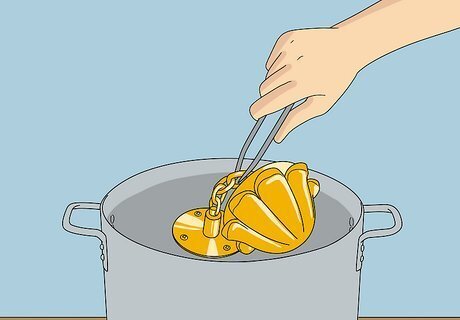
Use tongs to remove the brass from the hot water. The paint should have started to separate from the brass. Your brass will now be very hot, so exercise caution when removing it from the pot. You may want to put on a pair of gardening gloves when removing the brass. This should still allow you to have the necessary mobility you need to handle the tongs, while also allowing you to protect yourself from the heat.
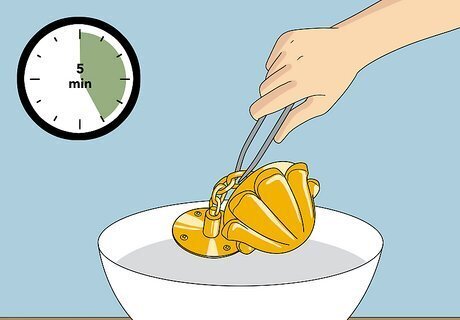
Set the brass in a bowl of ice water. Cooling off the brass immediately should make the paint even easier to remove. It will also make the brass much safer to handle. Let the brass sit in the ice water for about 5 minutes, then transfer it to an old towel you’re prepared to throw away.
Removing the Paint

Protect your hands with gloves. While you’re removing the paint, you’ll want to protect your hands from any chemicals. Wear rubber or gardening gloves and check them frequently for holes or tears. If you didn't soak the brass fixture in hot water, you can try to put some paint remover on the specific area of paint you want to remove, like Dirtex.

Scrub the paint with steel wool. Now that the paint is loosened, it should be easy to remove with a sponge of steel wool. Once you’ve penetrated through the paint, stop scrubbing. You don’t want to scratch the brass. If you start to notice any scratching, switch to a soft cloth to more gently rub off the paint. You can also scrape away the paint with your fingernails, if you don’t mind getting them dirty.

Scrape off stubborn paint with a flathead screwdriver. Use the flat edge of the screwdriver to carefully scrape off paint chips and strips that are sticking to the brass. Go in one direction only, and be sure to scrape away from your body.

Use a small nylon bristle brush to reach smaller areas. If your paint is sticking in small crevices or hinges, scrub those spots with a brush. These areas might need extra attention that can’t be provided by your steel wool. Avoid wire brushes, as these may scratch the surface of your brass. You can also try using a putty knife to help remove excess paint.

Wipe off the paint chips with a dampened cloth or sponge. Once your paint is removed, you’ll need to clean the brass off once more. Wet a soft cloth and wring out the excess water, and then use the damp cloth to gently wipe away any paint residue.
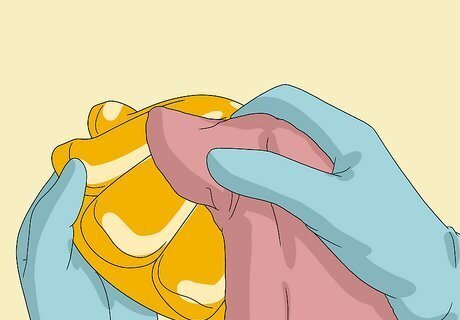
Dry off your brass with another soft cloth. Your brass should now be free of paint, and this will complete the cleaning process. If you’re dealing with older brass, you may now see a nice antique patina on the metal. Depending on your preferences, you may choose to leave that intact rather than polishing or waxing it away.
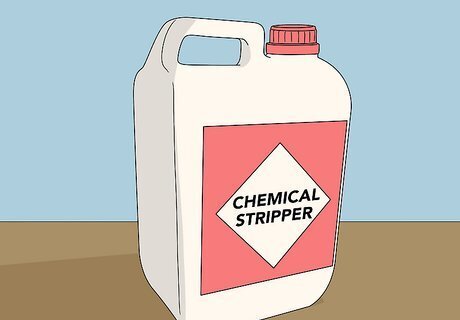
Use a chemical stripper for any remaining paint. If the paint still isn’t coming off, you may need to address it with a chemical stripper. There are a variety of commercial liquids and gels you can apply to brass in order to strip the paint. You’ll need to let it sit for a few hours, and then you should be able to wipe off the paint residue with a rag. Protect yourself from these substances by wearing gloves while you apply and remove it. Discard your gloves and any rags with chemical stripper on them in a metal trash can outdoors. Don't use sandpaper to remove the paint, since it will just scuff up your fixtures.
Polishing Your Brass

Cut a lemon in half and remove the lemon seeds. Choose a slightly soft lemon that will yield plenty of juice. Make a cut across the short side of the lemon. Once your lemon is cut in half, remove all the visible seeds from its surface by scraping them out with a knife.

Coat the surface of the cut lemon with table salt. You’ll probably need at least 2-4 teaspoons (11.4-22.8 g) of table salt to completely cover the lemon. The salt will act as a natural sponge when you apply it to your brass.
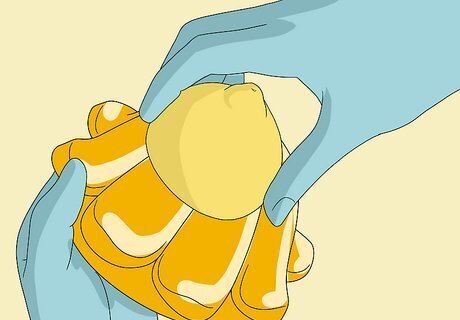
Scour the brass with the lemon and salt. Rub down the entirety of your brass item with the lemon and salt, squeezing out lemon juice as you go. Check on the salt layer, and replace it when necessary.

Sponge off the mixture. Use a damp sponge or cloth to wipe away the lemon juice and salt mixture. Be sure to thoroughly clean the brass, as any leftover lemon residue will become sticky and hard if it dries.

Buff your brass with a soft cloth. Use a soft, dry cloth to buff your brass by gently wiping the surface in small circular motions. Your brass should now be shiny and gold in appearance.
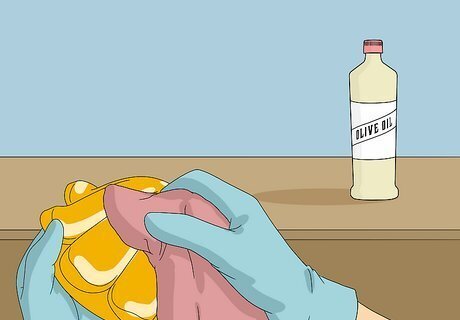
Wax your brass with olive oil. It’s a great idea to protect your brass with a layer of oil. Pour 1 teaspoon (4.9 mL) of olive oil onto a soft, dry cloth and rub the oil onto the brass. Move in small circles to coat the entire piece. If you prefer, there are also a variety of commercial wax options for your brass. The application process will also require a soft cloth, and you can buff the surface using the same small circular motions you would use with the oil. Some of these substances may require you to wear protective gloves.
















Comments
0 comment